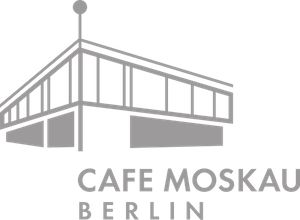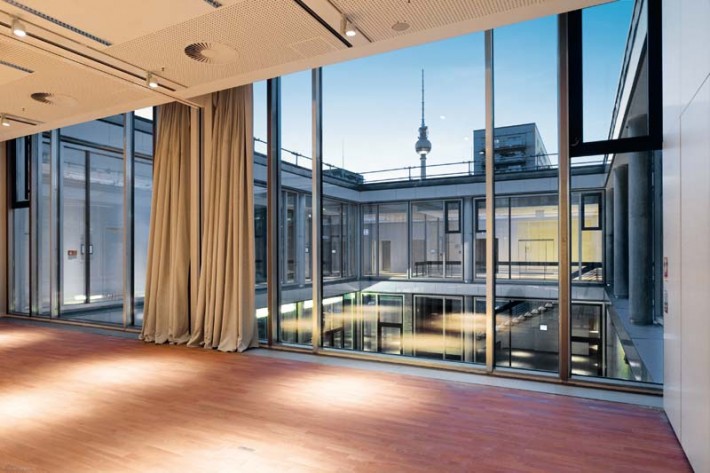1961-1964 Construction of a cult icon
Former restautant “Moskau” (Moscow) was built from designs by Josef Kaiser Cafe as the center of the first socialistic residential complex at Karl-Marx-Allee, former Stalinallee. The prestige building was supposed to symbolize the brotherhood between DDR and Soviet Union.
The building also gained symbolic significance through the gift from the Soviet Union’s ambassador: a full-scale replica of the Sputnik satellite. Once a symbol of progress, it still sits majestically above the entrance to this day.
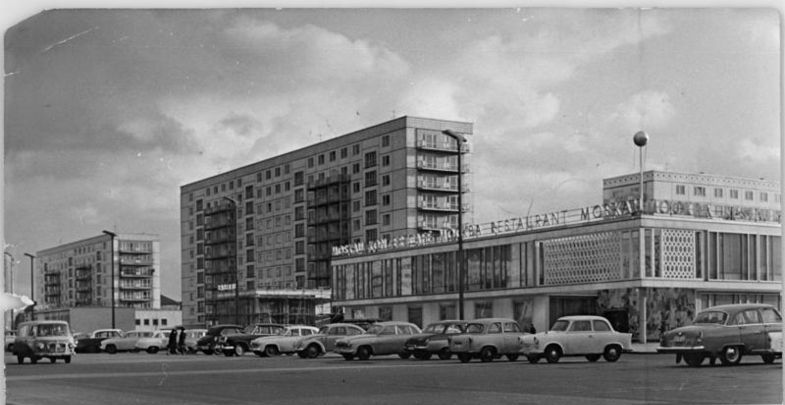
Source: Bundesarchiv, Bild 183-C0211-0006-001 / Fotograf: Weiß | License CC-BY-SA 3.0
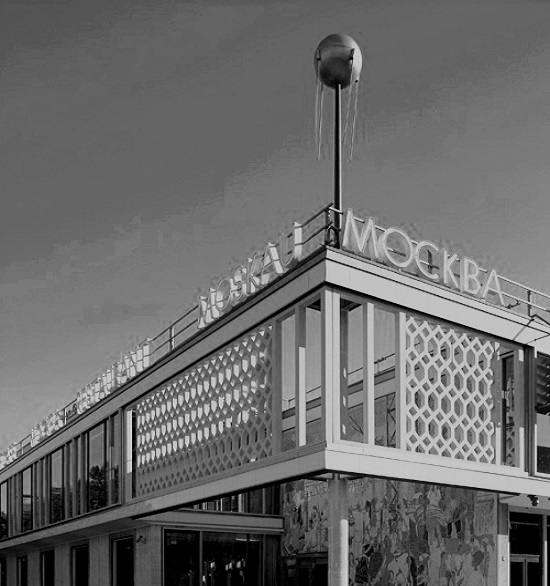
18th January 1964 opening – “Dobro pozhalovat!”
From then on guests of restaurant “Moskau” (Moscow) were able to enjoy russian dishes, drink Mocca at the bar, have fun at the dance cafe or visit the night bar in the basement. Little souveniers from the Soviet Union could be bought at the shop for arts and crafts “Natascha”. The comfortable interior design gave the visitors the feeling of exclusivity and uniqueness. Moreover Cafe Moskau was a popular meeting point for blackmarket and spying activities.
In typical Berlin fashion, a nickname quickly developed for the restaurant “Moskau” – thus “Cafe Moskau” was born.
It became a popular meeting place for black market activities and espionage work.
1982-1987 Renovation – Changing with the times
Cafe Moskau was restructured by Gerd Pieper. The wanted transparency and openness of the light-flooded rooms gave way to the spirit of the age. It was a architectural step back into the 1950s. Everything was decorated more cosy and warm, rooms were divided and height reduced.
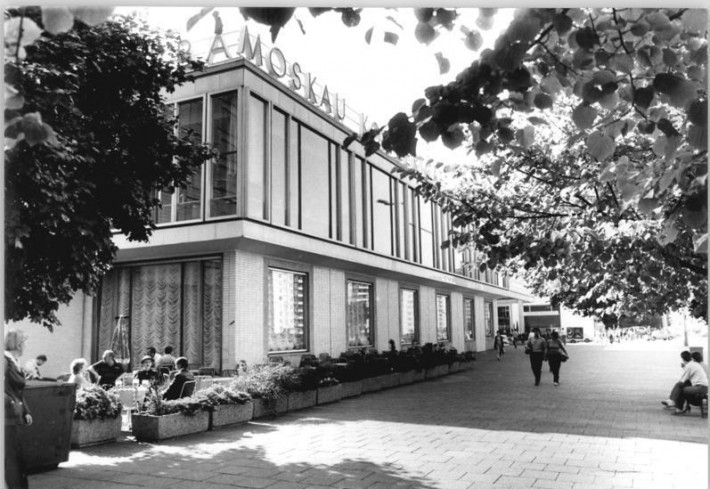
Source: Bundesarchiv, Bild 183-1985-0917-331 / Photograph: Peer Grimm | Licence: CC-BY-SA 3.0
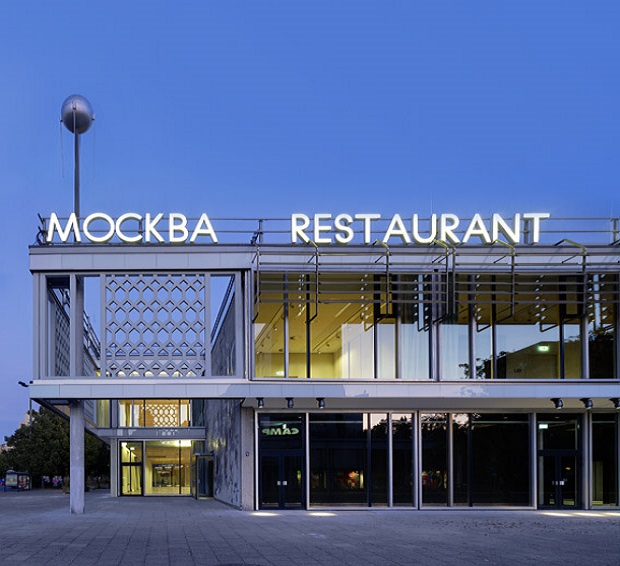
1989/1990 Reunification – Progress and standstil
Cafe Moskau became a listed building in 1989 and was therefore permanently secured as cultural asset. In 1995 restaurant business ceased.
2000 The heyday of party culture
Around the turn of the millenium Cafe Moskau was being used again. The WMF-Club as well as the legendary GMF-Parties that took place on sundays celebrated great success there.
2007 Restoration of old splendour
Nicolas Berggruen Holdings GmbH had the historic building fully renovated and the old charm of the 1960s was restored. Since 2009 the legendary Cafe Mosku is used as a multifunctional event venue for up to 2.400 persons.
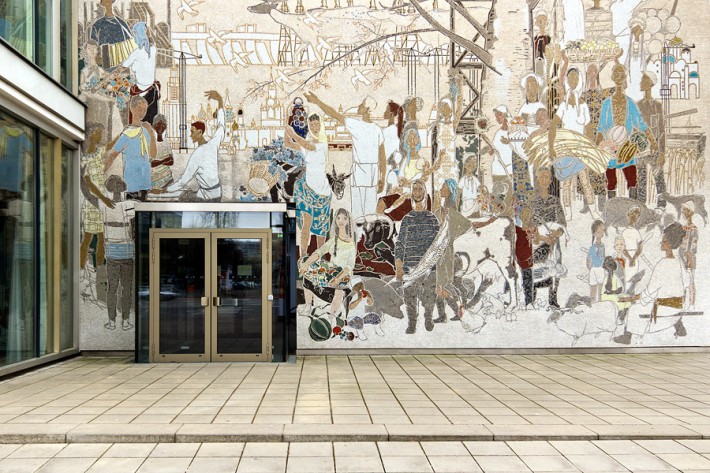
2010 honor of a contemporary witnes
The facade of Cafe Moskau was honored with the “federal award for handicraft of monument preservation” which was awarded by the Deutsche Stiftung Denkmalschutz. The mosaic “From the life of the peoples of the Soviet Union” is a design by Bert Heller and was executed in natural stone by mosaic artist Elisabeth Jeske from the Heinrich Jungebloedt mosaic workshop.
2013 new Management for Cafe Moskau
Lisa Wege and Katajun Fakhoury became operators and are now organizing events at Cafe Moskau with their team.
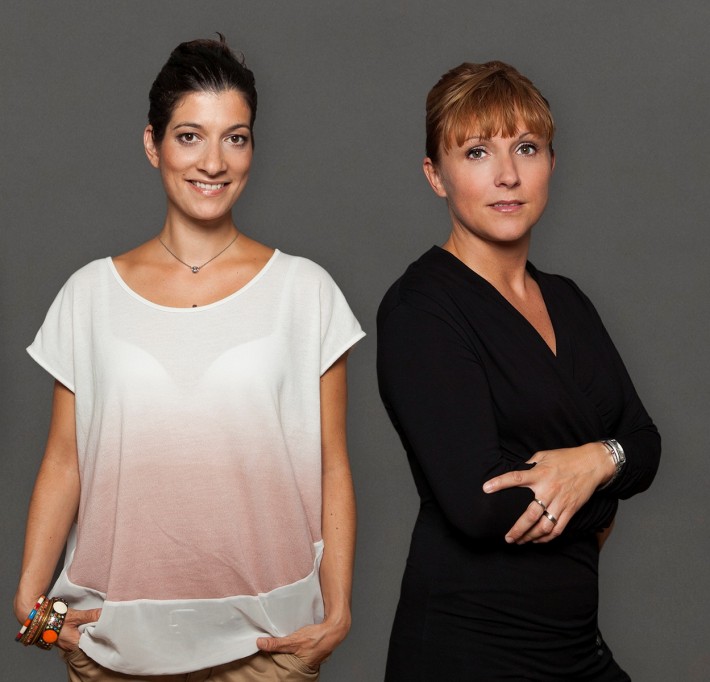
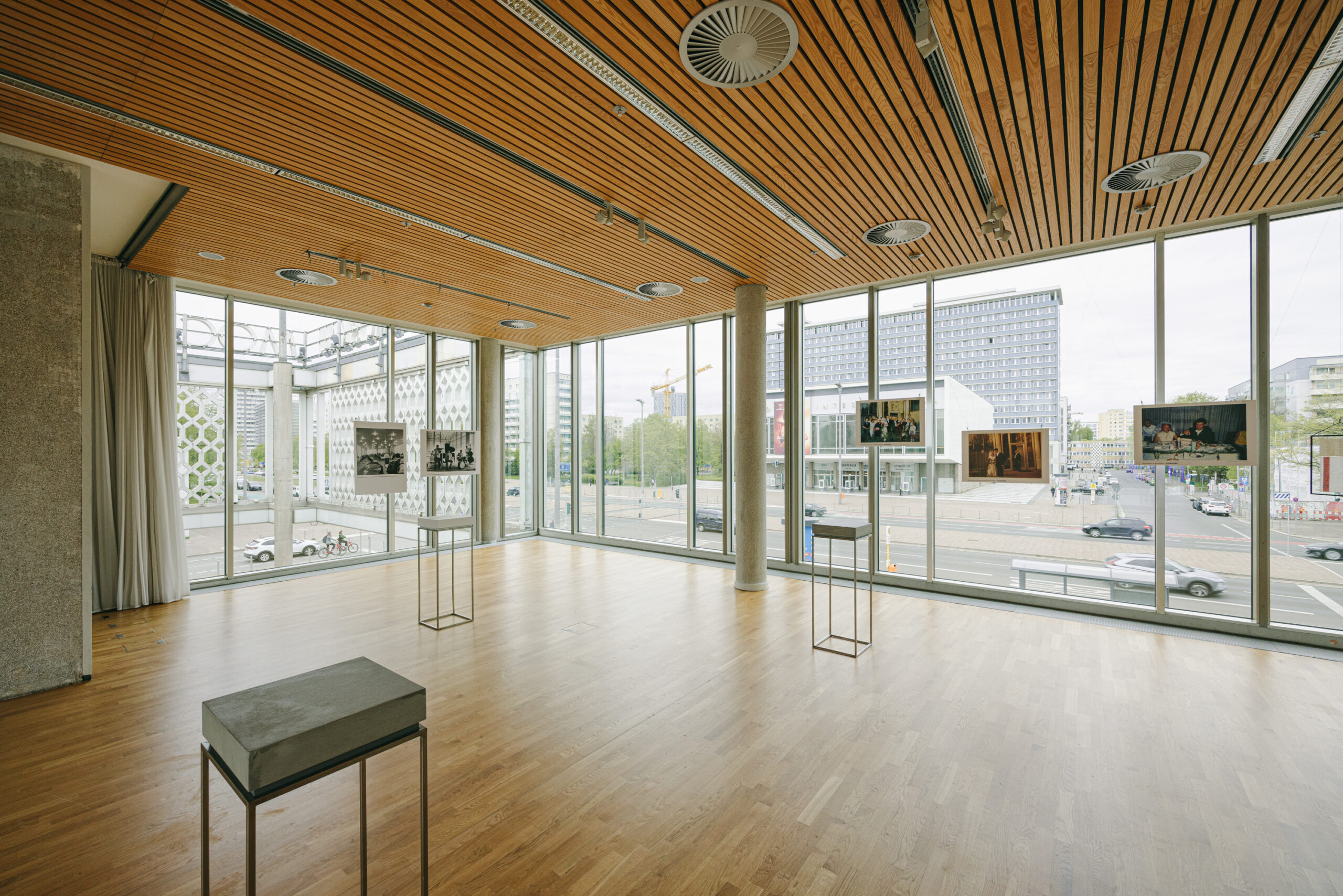
Photographer: Offenblende | Markus Braumann
2024 – 60 years of encounters
A retrospective journey – during a networking event, a photo exhibition showcasing encounters at Cafe Moskau was presented.
It began with the grand opening for 160 employees on August 18th, 1964, through the wedding of Mr. and Mrs. Fröhlich-Freund in August 1969, the eras of fashion shows and hairstyle presentations, culminating in the legendary GMF parties and Holy Shit Shopping events at the turn of the 2000s.
1961-1964 Construction of a cult icon
Former restautant “Moskau” (Moscow) was built from designs by Josef Kaiser Cafe as the center of the first socialistic residential complex at Karl-Marx-Allee, former Stalinallee. The prestige building was supposed to symbolize the brotherhood between DDR and Soviet Union.
The building also gained symbolic significance through the gift from the Soviet Union’s ambassador: a full-scale replica of the Sputnik satellite. Once a symbol of progress, it still sits majestically above the entrance to this day.

Source: Bundesarchiv, Bild 183-C0211-0006-001 / Fotograf: Weiß | License CC-BY-SA 3.0

18th January 1964 opening – “Dobro pozhalovat!”
From then on guests of restaurant “Moskau” (Moscow) were able to enjoy russian dishes, drink Mocca at the bar, have fun at the dance cafe or visit the night bar in the basement. Little souveniers from the Soviet Union could be bought at the shop for arts and crafts “Natascha”. The comfortable interior design gave the visitors the feeling of exclusivity and uniqueness. Moreover Cafe Moskau was a popular meeting point for blackmarket and spying activities.
In typical Berlin fashion, a nickname quickly developed for the restaurant “Moskau” – thus “Cafe Moskau” was born.
It became a popular meeting place for black market activities and espionage work.
1982-1987 Renovation – Changing with the times
Cafe Moskau was restructured by Gerd Pieper. The wanted transparency and openness of the light-flooded rooms gave way to the spirit of the age. It was a architectural step back into the 1950s. Everything was decorated more cosy and warm, rooms were divided and height reduced.

Source: Bundesarchiv, Bild 183-1985-0917-331 / Photograph: Peer Grimm | Licence: CC-BY-SA 3.0

1989/1990 Reunification – Progress and standstil
Cafe Moskau became a listed building in 1989 and was therefore permanently secured as cultural asset. In 1994 restaurant business ceased .
2000 The heyday of party culture
Around the turn of the millenium Cafe Moskau was being used again. The WMF-Club as well as the legendary GMF-Parties that took place on sundays celebrated great success there.
2007 Restoration of old splendour
Nicolas Berggruen Holdings GmbH had the historic building fully renovated and the old charm of the 1960s restored. Since 2009 the legendary Cafe Moskau is used as a multifunctional event venue for up to 2.400 persons.

2010 honor of a contemporary witnes
The facade of Cafe Moskau was honored with the “federal award for handicraft of monument preservation” which was awarded by the Deutsche Stiftung Denkmalschutz. The mosaic “From the life of the peoples of the Soviet Union” is a design by Bert Heller and was executed in natural stone by mosaic artist Elisabeth Jeske from the Heinrich Jungebloedt mosaic workshop.
2013 new Management for Cafe Moskau
Lisa Wege and Katajun Fakhoury became operators and are now organizing events at Cafe Moskau with their team.


Photographer: Offenblende | Markus Braumann
2024 – 60 years of encounters
A retrospective journey – during a networking event, a photo exhibition showcasing encounters at Cafe Moskau was presented.
It began with the grand opening for 160 employees on August 18th, 1964, through the wedding of Mr. and Mrs. Fröhlich-Freund in August 1969, the eras of fashion shows and hairstyle presentations, culminating in the legendary GMF parties and Holy Shit Shopping events at the turn of the 2000s.
